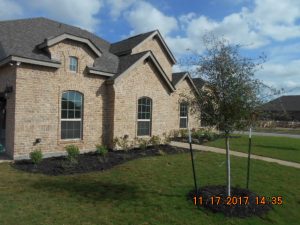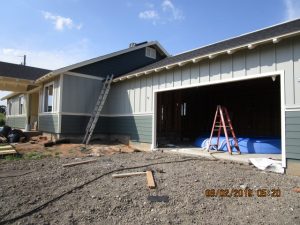Protect Your New Home Purchase With A Phase Inspection

Phase inspections are "snapshots" of work in progress when a new home is being built, and may well be the best inspection that money can buy. The reason is that information from the inspection can be used to help guide the process of building to minimize errors and correct problems before the house is completed. While several municipalities have a building department, many areas do not. Are you having a house built in a rural or unincorporated area? If you are, you are at the mercy of your general contractor and the subs he provides. Maybe you have a general contractor you really trust who has great references. That much is good, but he is still trying to maximize his profit while you will want to maximize your value. As a third party with no vested interest in the property, a professional inspector can fulfill a vital role, that of assuring that there are minimal defects, intentional or otherwise, during the building process.
You may even have a house in an incorporated area, but did you know that even the best city building departments are often overworked and may not be able to take the time to identify many of the flaws that could be present? I have found a number of issues even in homes that are built in incorporated areas such as defective workmanship or cost-cutting that directly affects the buyer. As a certified home inspector with decades of residential building experience, I would not be working for the city or county, but for you, the client!

Phase One: The Foundation

- Designed for locality and soil conditions
- Footings and slabs are on undisturbed or fully compacted soil
- Moisture barrier present and continuous or properly lapped
- Reinforcement placed and secured correctly
- Adequate expansion joints and control joints
- Supply lines, drain and waste vents are correct and properly protected
- Wall plate anchors correctly placed
The items above are some of the important items I will look for as the foundation is being prepared, especially just prior to the pour. Mistakes that are made on the foundation are hard to detect and expensive to repair once the concrete dries!
Phase Two: Pre-drywall

- Window and door openings have adequate headers and supports
- Load bearing elements correctly stacked
- Pressure treated lumber where in contact with cement
- Rafters/trusses correctly placed, braced, and secured
- Exterior sheathing correctly nailed
- House wrap correctly installed
- Window opening flashing and seals are done right; many are not
- Windows and doors properly spaced in openings
- Drywall backing present and adequate
- Plumbing and electrical conductors have shields as needed/protected from drywall fasteners
- Fire-stop assemblies as required
- Ductwork not compressed and properly supported
- Ductwork sealed with mastic where joined
- Adequate return air
- Bathroom/other fans ventilated correctly
- Adequate and safe combustion air
- Adequate and safe combustion exhaust
- Attic and roof adequately vented
- Service panel properly installed and grounded
- GFCI/AFCI breakers installed
- Weather-tight covers on exterior outlets
- Conductors properly secured and protected
- Insulation adequate for Energy Star recommendations in all areas of house
- Holes from penetrations sealed in framing members
- Penetrations sealed to the weather
- Exterior doors and windows sealed
The items above are some, but not all, of the things I will look for during the framing and exterior finish stage. "Minor" defects during this stage can lead to big headaches later on. As you can see, there are numerous items of concern during this middle phase. Although pre-drywall is actually one of three phases, two or three visits during this time are highly recommended since this is when errors can be made that are difficult to correct if building continues before they can be corrected. For example if windows are not flashed or weather-proofed correctly, this should be addressed before siding or veneer is installed.
Phase Three: Final Inspection
This is identical to a TREC Home Inspection. Refer to the TREC standards of practice if you want to read more. You will receive a TREC Inspection Report as a part of this service, along with a complimentary home warranty report within 90 days of the builder's home warranty expiration.